KE Update
I first wrote about KE Ratio in August 2024, till date that is probably the most useful thing I have written at hive and about hive. Over time I have written multiple posts about KE and they are summarized and back-linked here. A largest synthesis of data can be seen in the Governing Dynamics Post. Again simple definition never hurt:
KE = (Author Rewards + Curation Rewards)/Held HP
KE = 1.0, you hold exactly as you earn (approximately!) KE > 1.0, you hold less than you earn KE < 1.0, you hold more than you earn
Typically as a responsible hive stakeholder I like to see people hold more than they earn. Especially if I consider the time factor, I like people to have a low KE for majority of the time. You can look at the Governing Dynamics Post and observe that 'whales' do not have High KE. They are typically invested deeply in the ecosystem and they do not have extractor mindset.
Also it can be easier seen that Curation programs show high KE because they return the curation rewards to their delegators, this is perfectly acceptable behavior. So notice, that we are setting some boundary conditions and NOT taking KE in isolation.
Boundary conditions of KE
- Do Not USE KE ratio in isolation
- High KE or Low KE is relative. Reality in a continuum, any boundaries will create edge effects
- People have suggested greater than KE < 1.0 as excellent, KE = 1-3 as moderate, KE > 3 or 5 as un-acceptable, these are opinions, and I am not responsible for these boundaries
- Curation programs have very high KE and that is okay
- Someone with a High Hive Reputation (above 70) and High KE is far worse than someone with a lower hive reputation (less than 70) and low KE
- An inactive account with high or very high KE is water under the bridge; nothing can be done there. However, an active (currently making posts) account with high KE requires actions from the community
Actions
- Consider making the user aware of their high KE by writing a comment
- Have a social conversation and discussion about their personal life situation (this is a social network)
- Observe how the user is responding, was it ignorance or it was deliberate
- Consider the length of the account, a 6 month old account can make a mistake, a 6 year old account doesn't have that excuse
- See if the user is making positive changes
- Easy way to improve KE is powering up hive
What is new: The Marky Edition
@themarkymark recently published a number of posts, the most recent being this one, where he is providing a new data analytics table of various hive related data. It is called Hive Analytics. It has a number of different elements and tabs that leads to various tables of data that can be filtered in a variety of different ways. I especially liked the recent addition to KE- Leaderboard. The link is below:
https://hiveanalytics.usehive.com/ke-leaderboard
Marky also introduced a new matrix called KE+. It is defined as follows:
KE+ = (Author + Curation + Witness + DHF)rewards/Held HP
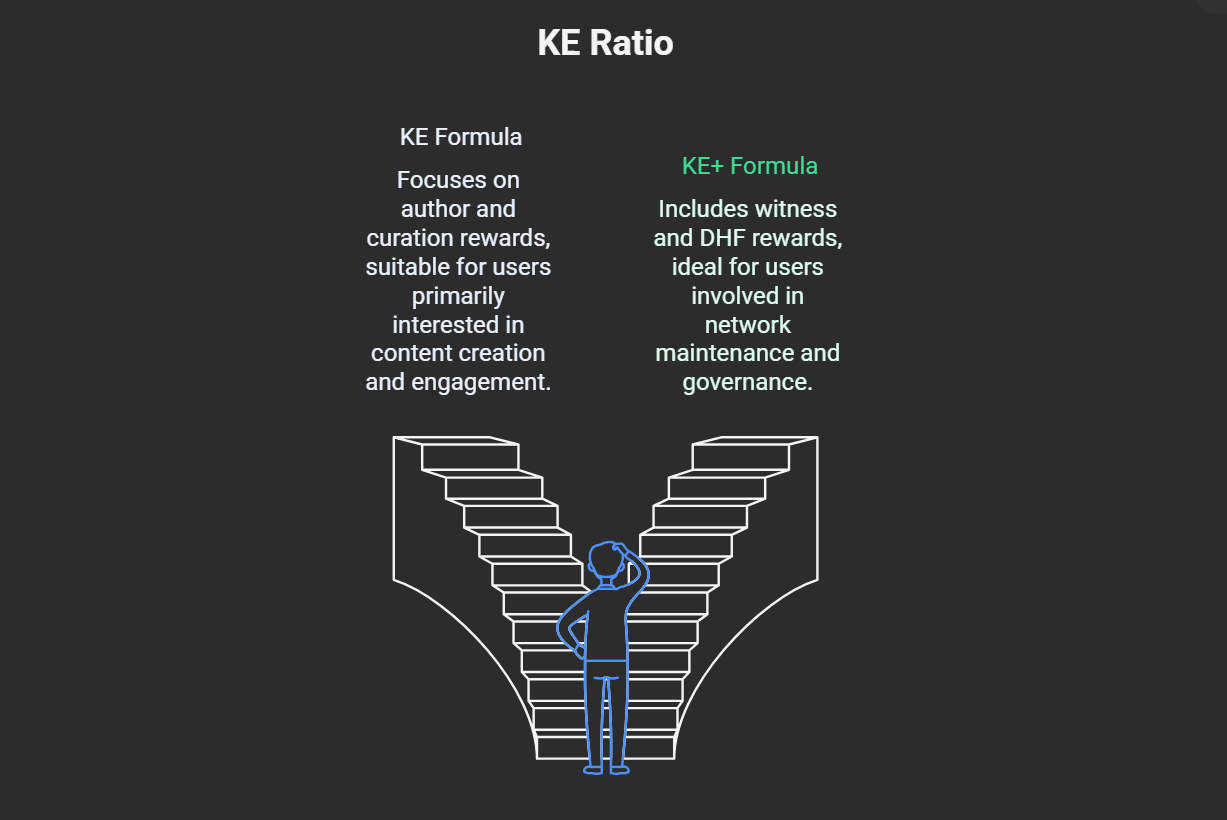 Generated using Napkin
Generated using Napkin
For most common hive users the two new terms, witness rewards and DHF rewards are ZERO. For example it is zero for me. So in my case KE = KE+. For me both numbers are 0.259.
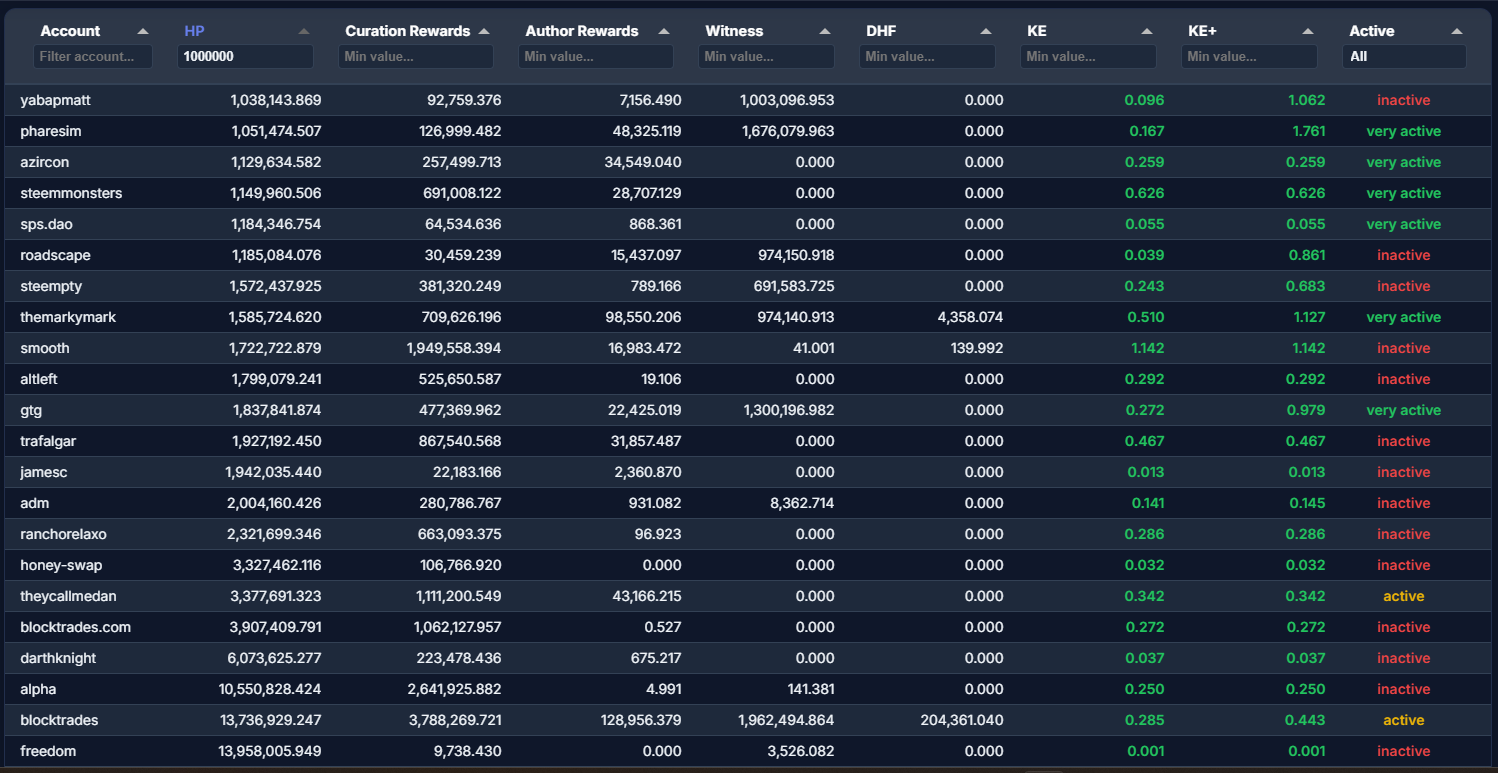
Above is a table of hive accounts with > 1M held HP. For Pharesim, who is a witness or block producer, his KE = 0.167, but KE+ = 1.761. It is still green, or below 3.0. However, this is another way to look at people's behavior at hive. An interesting note: all KE and KE+ values for 1M HP club users are not only below 3.0, they are below 2.0. In fact 1.761 is the highest KE+ value for the large stakeholders. We can look at the large stakeholders more at a later time, but they are not very interesting fortunately! :)
Let's Focus on High KE Active Users
In order to do this filter, I simply put 3000 in the HP box and hit enter. I used that as a random HP cut-off for user with some kind of history at hive (don't want to pick up a bunch of new users). The default sort in the tool is sort by highest KE to lowest KE.
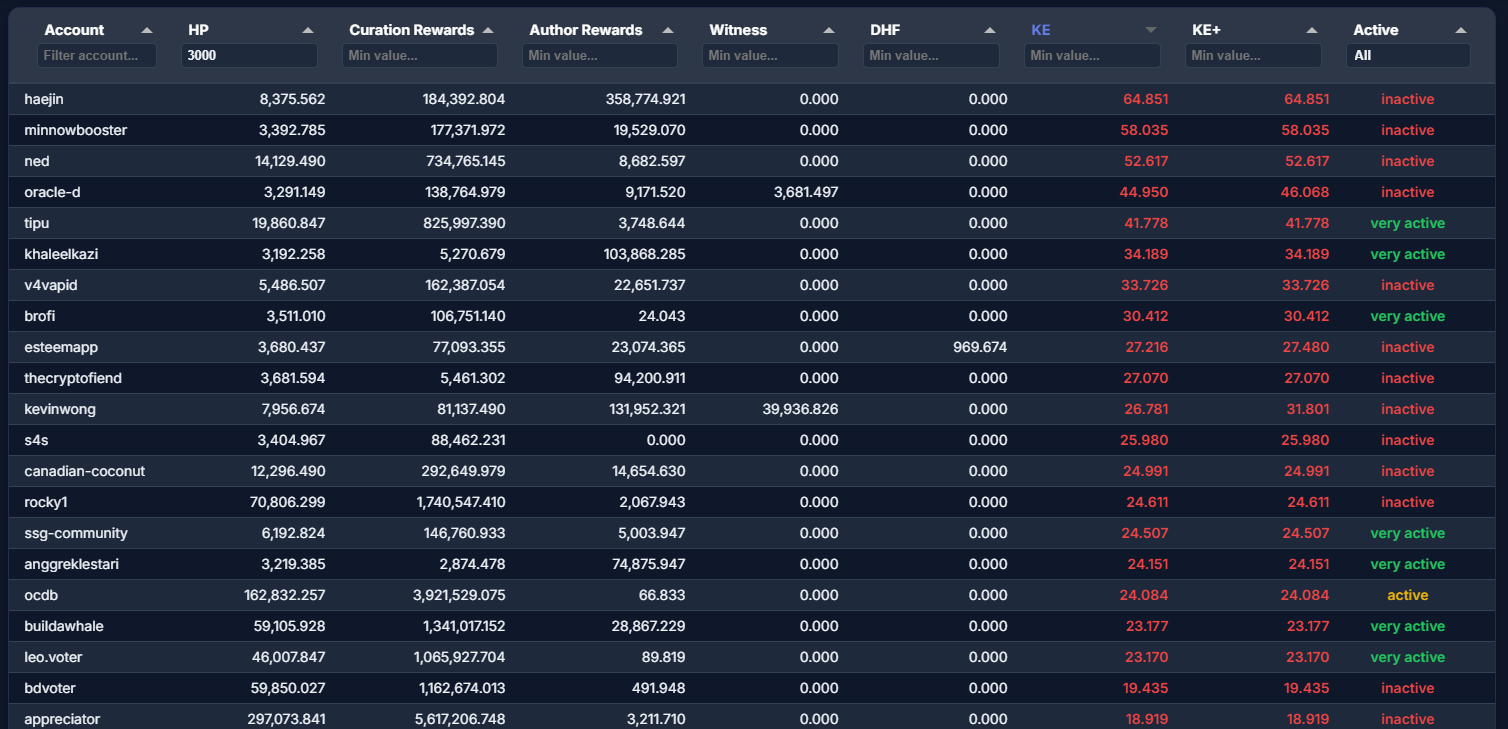
This is what I got. At the bottom you can set the display to a max of 500 rows on a page. That gave the lowest KE at the bottom with a value of 1.789! I thought that is plenty good and deep into the green for me to care. Let us plot this up. I explained this so that you know where I got the KE=1.789!

Here is the familiar plot if you guys are used to my style of cross plots. X-Axis is HP in log-scale, and Y-axis is KE also in log scale. It is necessary to use log-scale for visibility and correlation, as we are plotting data that varies several orders of magnitude. The size of the circle is proportional to the author rewards.
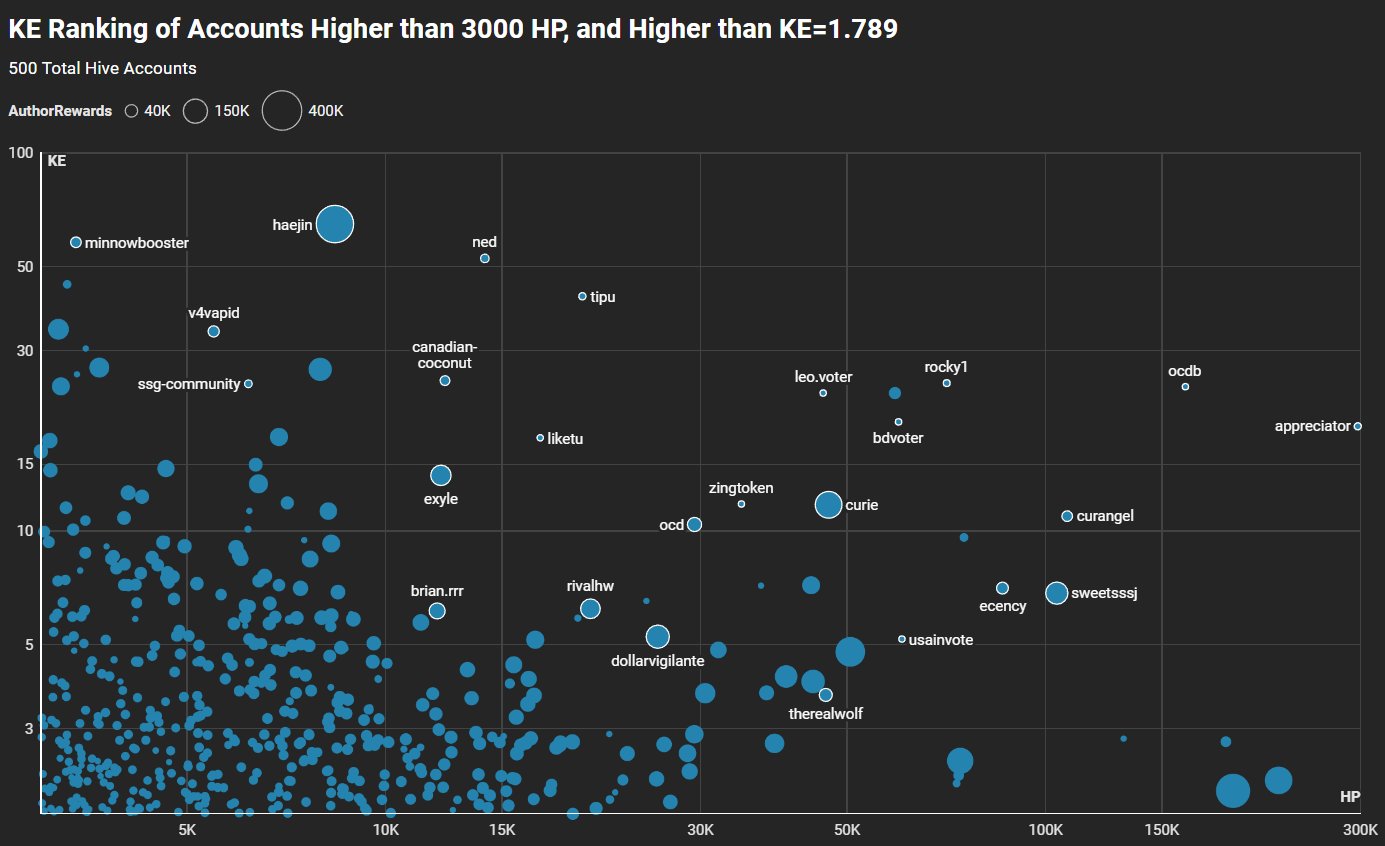
We immediately see the crowded and less crowded part of the area. If we are looking for bad boys and girls, pardon my French, we should be looking in the outlier areas. However, mind my boundary conditions! We have an activity filter here!
Now Only Active and Very Active
Notice the data size dropped to 349. Inactive accounts doesn't interest me at the moment. Those people have sold and left, I don't care about them until they come back and start posting.
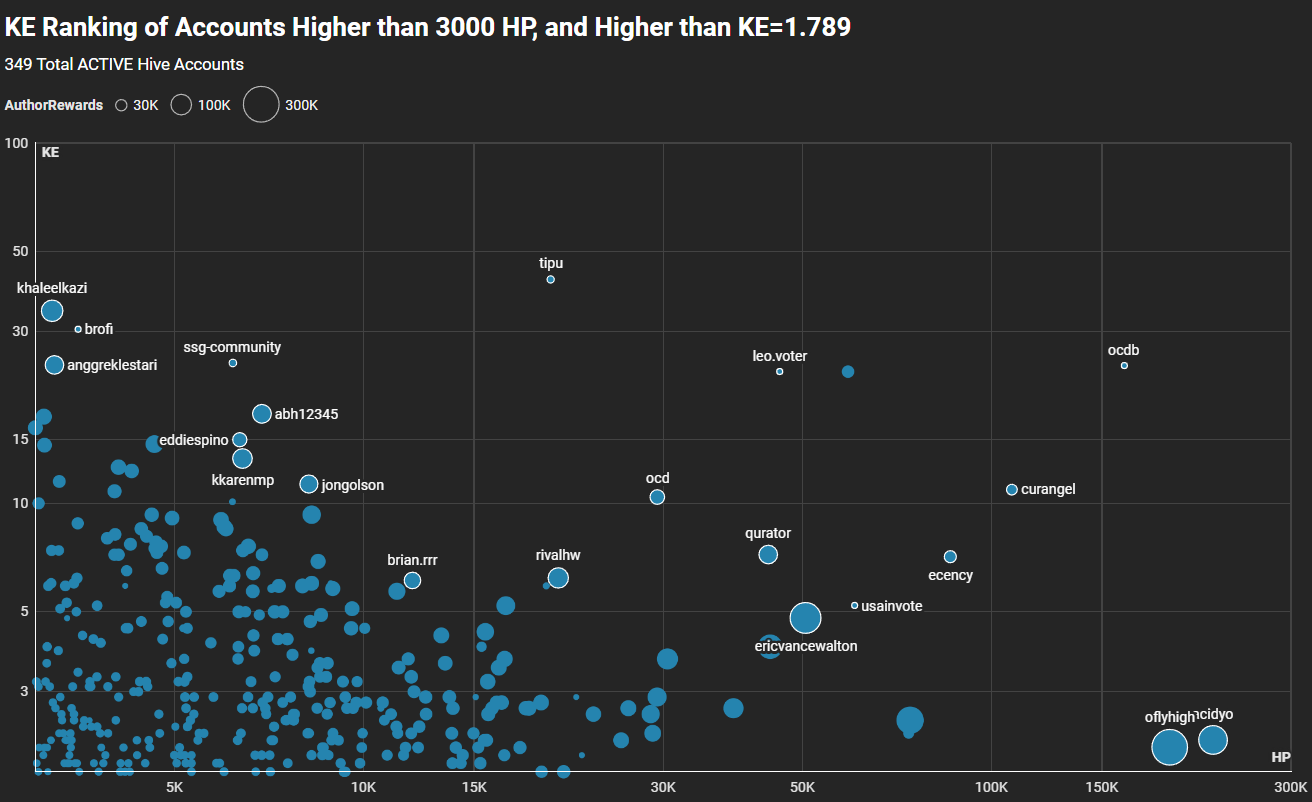
Well, I see some familiar names! Now let us clip the vertical axis to 3.0. I think that is generous! Now it is 166 data points or accounts with KE > 3.0. Again look into the outlier area, and ignore the curation projects.
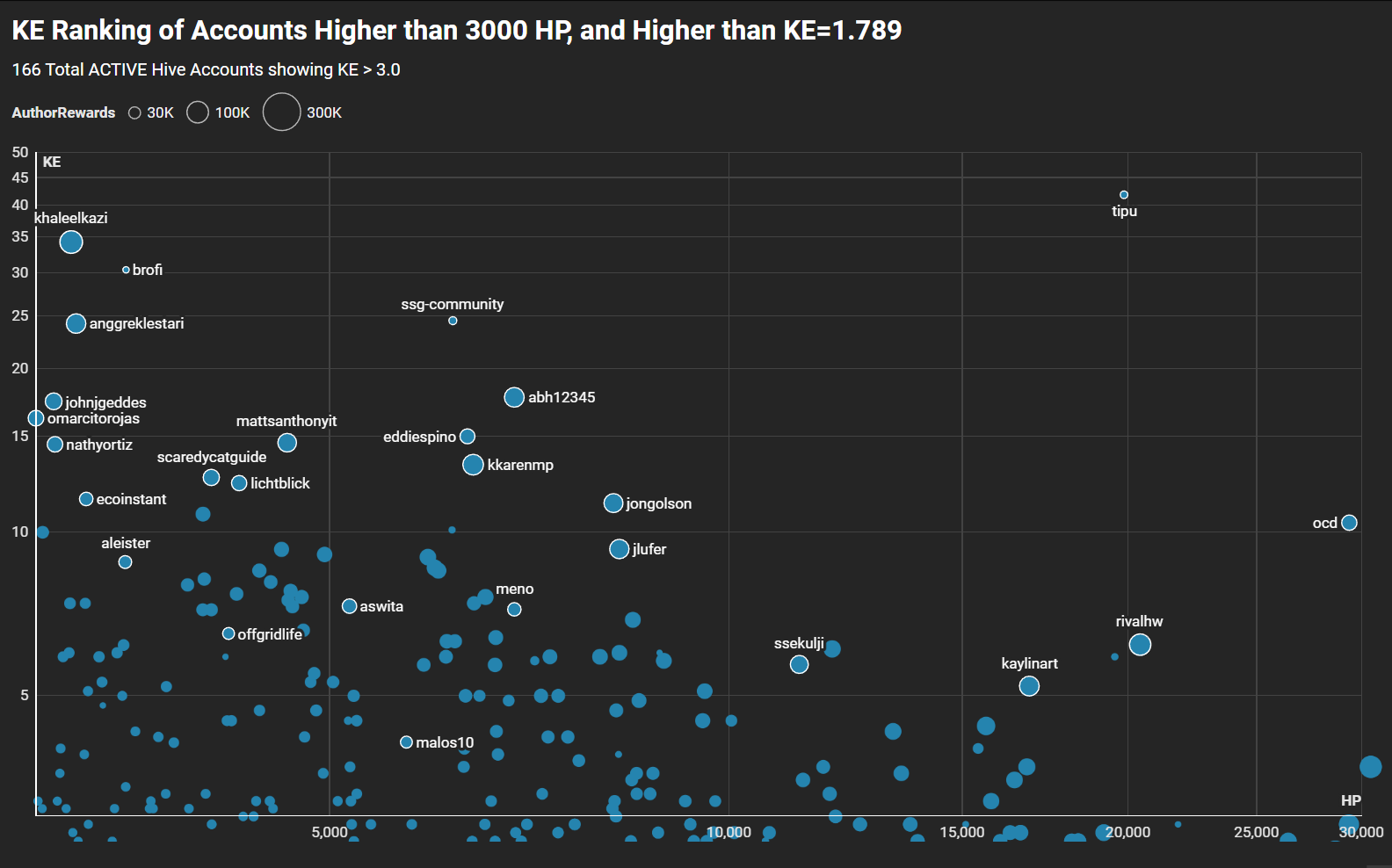
Let us take one active account that sticks out like a sore thumb! Mind you, I mentioned now we also have the time component to this, so we can see how an individual behaved with time at hive blockchain. That is @beaker007 's tool https://beebalanced.streamlit.app/balance_history_page
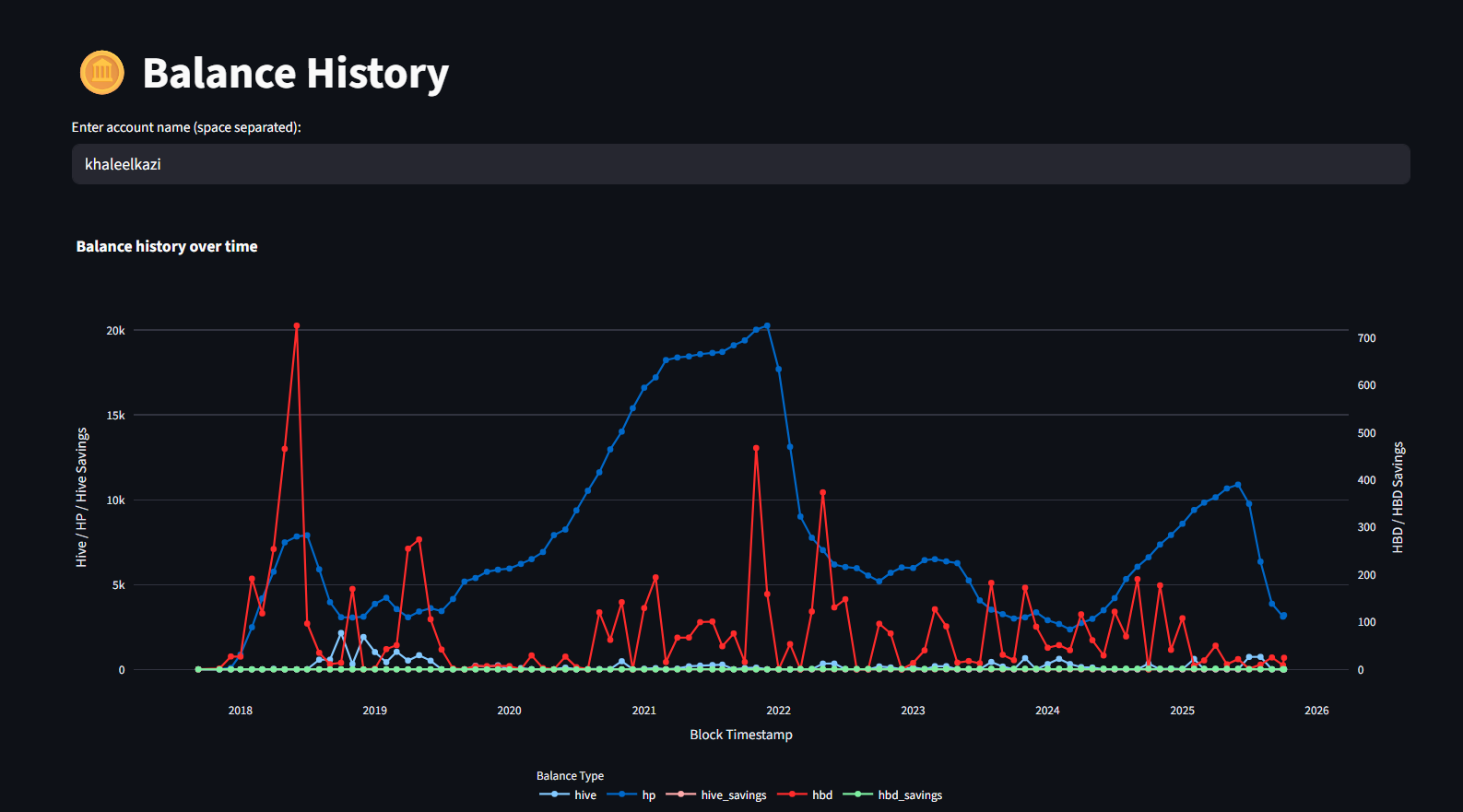
Blue line is the held HP through time for khaleelkazi account! With a KE of 34 and very active, I would classify that account as a hive reward pool extractor.
There you have it. I am just presenting the data with some broad guidelines and boundary conditions. What you want to do with it is entirely up to you!

